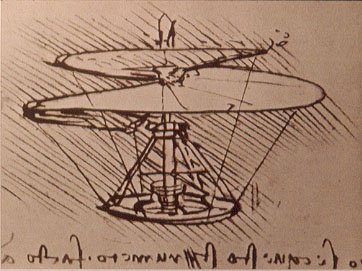Optimisation
Mathematical knowledge mostly expresses itself via 'forward modeling', that is the ability to describe the result of a process acting under certain initial conditions (cause -> effect framework). However, scientific quest usually strives for the opposite, that is, to define the causes which lead to specific effects (cause <- effects). Roughly, this is what inverse theory is about. For only very few problems a direct solution to the effect->cause problem can be found, so inversion is mostly about more or less cleverly designed heuristics. I have applied inversion to very different mathematical problems with the purpose of building a tool for expert users as well as for users with little mathematical background. The inversion strategy is based mainly on the four components described below; depending on the expertise, the various components can be used differently: |
 |
Optimization routines
A set of optimization routines, based mostly on global search strategies, but complemented by local search engines, when needed. They include Genetic algorithms, Swarm optimization, Direct Algorithm, Lipschitz search, plus local searches with and without use of derivatives. The choice of the routine to use depends on the kind and dimensionality of the inverse problem.- Boschetti F., 2008, A Local Linear Embedding Module For Evolutionary Computation Optimization, Journal of Euristics, Issue Volume 14, Number 1, Pages 95-116, doi:10.1007/s10732-007-9030-6.
- Boschetti F., M. Dentith, R. List, A staged Genetic Algorithm for tomographic inversion of seismic refraction data, Exploration Geophysics, 1995.(see my thesis)
- Boschetti F., M. Dentith, R. List, Inversion of seismic refraction data using Genetic Algorithms, 1996, Geophysics, 1715-1727.(see my thesis)
- Boschetti F., 2007, Improving resource exploitation via Collective Intelligence by assessing agents' impact on the community outcome, Ecological Economics, 63, pages 553-562.
- Boschetti & Brede, 2009, An information-based adaptive strategy for resource exploitation in competitive scenarios, Technological Forecasting & Social Change, 76(4), 525-532, doi:10.1016/j.techfore.2008.05.005
Interactive Inversion
This is a surprising powerful technique in which the traditional numerical cost function is replaced by a subjective user evaluation. This is designed to deal with problems which are non numerical or which can not return a numerical solution. Examples are geological problems for which a measure of geological similarity to structures seen in Nature is not available or natural resource management problems in which we goal may not be easy to define or agree upon. This is dealt with by asking expert users to rank results according to subjective criteria. This method is also used to include expert knowledge in numerical inversion.
- Boschetti F., 2004, Controlling and investigating Cellular Automata behaviour via interactive inversion and visualization of search space, New Generation Computing, Special Issues on Intertactive Evolutionary Computation, Vol.23, No.2, February 2005
- Boschetti F., Wijns, C. and L. Moresi, 2002, "Effective exploration and visualisation of geological parameter space", 2002, Geochemistry, Geophysics, Geosystems (G Cubed), 4(10), 1086).
- Boschetti F. and L. Moresi, 2001, "Interactive Inversion in Geosciences", Geophysics, 64, 1226-1235.
- Wijns, C., Poulet, T., Boschetti F., Griffiths, C., Dyt, C., : Interactive Methodology Applied to Stratigraphic Inverse Modelling, 2003, Geological Prior Information: Value and Quantification, in: A. Curtis and R. Wood (Eds.), Geological Prior Information, Geol. Soc. of London Special Publication.
- Wijns, C., F. Boschetti and L. Moresi, "Inverse modelling in geology by interactive evolutionary computation", 2003, Journal of Structural Geology, 25(10), 1615-1621, doi:10.1016/S0191-8141(03)00010-5.
- Kaltwasser P., Boschetti F., and Hornby P., 2004, Measure of similarity between geological sections accounting for subjective criteria, Computer & Geosciences, Vol 31/1 pp 29-34 (CG Best Paper Award)
- Boschetti F., P. Hornby and F.G. Horowitz, 2001, Wavelet based inversion of gravity data, Exploration Geophysics, 32, 48-55.
Parameter space visualisation
We consider this an integral part of an optimisation process. See here.
Applications
- Boschetti, McDonald and Brede, A rapid assessment agent based model for natural resource management, ModSim07, ChristChurch, NZ, December 2007
- Strykowski G., Boschetti F., and Papp G. 2004, "Estimation of the mass density contrasts and the 3D geometrical shape of the source bodies in the Yilgarn area, Eastern Goldfields, Western Australia", Journal of Geodynamics
- Wijns, C., Poulet, T., Boschetti F., Griffiths, C., Dyt, C., : Interactive Methodology Applied to Stratigraphic Inverse Modelling, 2003, Geological Prior Information: Value and Quantification, in: A. Curtis and R. Wood (Eds.), Geological Prior Information, Geol. Soc. of London Special Publication.
- Kaltwasser P., Boschetti F., and Hornby P., 2004, Measure of similarity between geological sections accounting for subjective criteria, Computer & Geosciences, Vol 31/1 pp 29-34 (CG Best Paper Award)
- Boschetti F., P. Hornby and F.G. Horowitz, 2001, Wavelet based inversion of gravity data, Exploration Geophysics, 32, 48-55.
- Boschetti F., M. Dentith, R. List, Inversion of seismic refraction data using Genetic Algorithms, 1996, Geophysics, 1715-1727.(see my thesis)
- Boschetti F., M. Dentith, R. List, Inversion of gravity and magnetic data by Genetic Algorithm, 1997, Geophysical Prospecting, 461-478 (see my thesis).
- Wijns, C., F. Boschetti and L. Moresi, "Inverse modelling in geology by interactive evolutionary computation", 2003, Journal of Structural Geology, 25(10), 1615-1621, doi:10.1016/S0191-8141(03)00010-5.
- D. Holden, N. Archibald, F. Boschetti, M. Jessell, 2001, "Inferring Geological Structures Using Wavelet-Based Multiscale Edge Analysis and Forward Models", Exploration Geophysics.